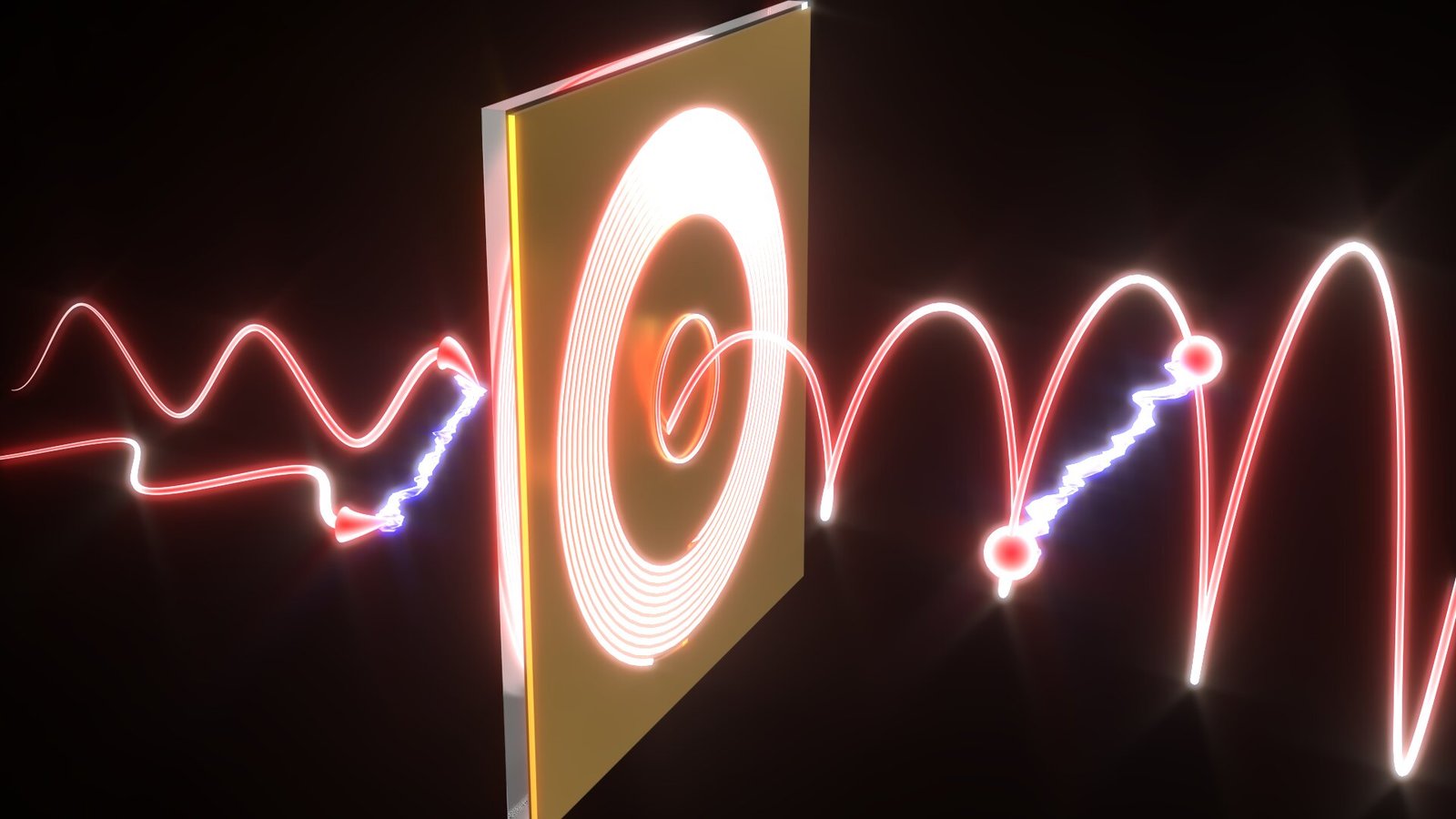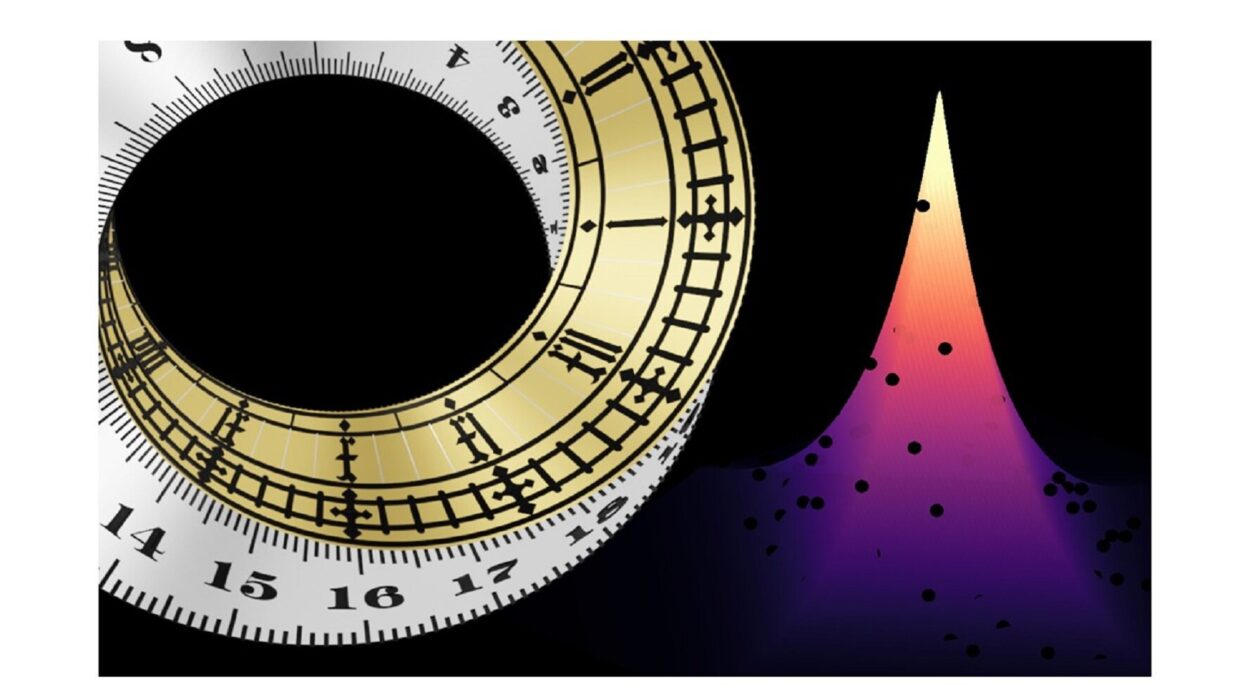In the strange and wondrous world of quantum physics, where reality stretches the limits of imagination, a groundbreaking discovery by researchers at the Technion – Israel Institute of Technology – has illuminated a new pathway in the field of quantum entanglement. This leap forward, recently published in Nature, marks the first identification of a new kind of quantum entanglement in over two decades—one that could transform the design and miniaturization of future quantum communication and computing technologies.
Led by Ph.D. student Amit Kam and Dr. Shai Tsesses, the research team unveiled a never-before-seen form of quantum entanglement that emerges when photons—those massless, high-speed packets of light—are confined within nanoscale structures. In these extreme confines, photons reveal a hidden side: their total angular momentum becomes entangled in a way that was previously undetected and, until now, purely theoretical.
The Ghostly Roots of Entanglement
To appreciate the magnitude of this discovery, we need to revisit the historical backdrop of quantum entanglement—a phenomenon that, for decades, puzzled even the brightest scientific minds.
It all began in 1935 with a now-iconic paper authored by Albert Einstein, Boris Podolsky, and Nathan Rosen, commonly known as the EPR paradox. Rosen, notably, would go on to help establish the Faculty of Physics at Technion. In their thought experiment, the trio presented a scenario where measuring the state of one particle instantaneously determined the state of another—even if the particles were separated by light-years. This uncanny “spooky action at a distance,” as Einstein derisively labeled it, defied classical physics and threatened the very concept of locality.
But what Einstein perceived as a theoretical absurdity eventually became a cornerstone of quantum mechanics. It took decades of experimental finesse to prove that quantum entanglement is not just a thought experiment—it’s a fundamental aspect of reality.
Technion’s own Prof. Asher Peres played a pivotal role in legitimizing this phenomenon in the 1990s. Along with Charles Bennett and Gilles Brassard, Peres introduced the concept of quantum teleportation—a method for transferring quantum information between entangled particles without moving the particles themselves. This laid the groundwork for quantum communication as we know it.
In 2022, the Nobel Prize in Physics recognized experimental work by Alain Aspect, Anton Zeilinger, and John Clauser—giants who validated entanglement’s eerie predictions in the laboratory. Aspect and Zeilinger, incidentally, are honorary doctorate recipients from Technion, underscoring the institute’s deep legacy in quantum research.
Light, Twisted: Angular Momentum in Photons
Entanglement isn’t limited to mysterious quantum particles. Photons, the workhorses of optical technology, can also become entangled in various ways—through their polarization (the direction their electric field oscillates), their color (frequency), or their path through space.
But photons also carry angular momentum, and this property adds a fascinating twist—literally.
Angular momentum in photons comes in two flavors:
- Spin angular momentum: This is tied to the polarization of light, or the rotation of the electric field as the photon moves.
- Orbital angular momentum: This reflects the spiral-like motion of the photon’s wavefront, much like a corkscrew spiraling through space.
This dual-rotation concept is similar to how Earth rotates on its axis (spin) while also orbiting the Sun (orbit). Traditionally, these two components are considered independently, especially in larger light beams that easily separate them.
But when photons are forced into the tight confines of nanoscale structures—smaller than the wavelength of the light itself—these once-separable properties merge. At this scale, only a single, unified quantity matters: the total angular momentum.
A Nano-Revolution: Entangling Photons at the Smallest Scales
Why cram photons into spaces smaller than their own wavelength? The answer is twofold—and both reasons are tantalizing for the future of technology.
First, miniaturizing photonic devices allows for greater integration of quantum systems. Imagine shrinking entire communication or computing components down to a microscopic chip, enabling scalable quantum technologies much like microprocessors revolutionized classical computing.
Second, and even more crucially, this confinement significantly enhances the interaction between photons and surrounding materials. The tighter the space, the more a photon “feels” the nearby environment—leading to stronger, more controllable quantum effects.
And now, Technion scientists have added a third reason: the emergence of a new form of quantum entanglement.
In their Nature study, Kam and Tsesses meticulously tracked the journey of photons injected into a nanoscale system—structures so small that thousands could fit within the width of a human hair. As the photons traveled through these structures, they underwent a transformation. Their distinct spin and orbital angular momenta fused into a singular, inseparable identity: total angular momentum.
The researchers then entangled pairs of photons using this total angular momentum—a feat never achieved before. Through a series of sophisticated measurements, they demonstrated that the state of one photon could only be described in relation to its entangled partner’s total angular momentum. This was no classical correlation—this was genuine quantum entanglement.
The result: the first discovery of a new type of photonic quantum entanglement in more than 20 years.
A Portal to the Future of Quantum Technologies
The implications of this discovery are vast and exciting. First, it expands the catalog of quantum states available for information encoding. Where classical computers rely on bits, and quantum computers rely on quantum bits (qubits), the richness of entangled states in total angular momentum opens the door to higher-dimensional entanglement. These so-called qudits (quantum digits) can carry more information than traditional qubits, promising greater data density and processing power.
Second, this breakthrough could supercharge the miniaturization of quantum devices. Entangling photons at the nanoscale enables the construction of compact, chip-integrated quantum processors and secure communication nodes—essential for the next generation of quantum networks.
Finally, this research may reveal new physics hiding in the tightest corners of light’s behavior. By exploring the interactions between tightly confined photons and materials, scientists can discover novel effects and exotic states of light that could drive innovation in quantum sensing, photonic transistors, and perhaps entirely new forms of quantum matter.
The Quantum Legacy Lives On
In many ways, this discovery is a poetic continuation of Einstein’s legacy. Though he remained skeptical of quantum entanglement throughout his life, it was his challenge to quantum mechanics that propelled scientists to probe its deepest mysteries. Now, nearly a century after the EPR paradox shook the foundations of physics, Technion researchers—heirs to Einstein’s intellectual rebellion—have added a new layer to the story.
Their finding reminds us that even in the most confined spaces, the quantum world remains boundless. Photons, once thought to be simple messengers of light, continue to surprise us, twisting and turning in dimensions barely imaginable—until brilliant minds like those at Technion help bring them to light.
As the quantum revolution accelerates, discoveries like these illuminate the path forward. Not just toward faster processors or more secure networks, but toward a deeper understanding of reality itself—one entangled photon at a time.
Reference: Amit Kam et al, Near-field photon entanglement in total angular momentum, Nature (2025). DOI: 10.1038/s41586-025-08761-1






